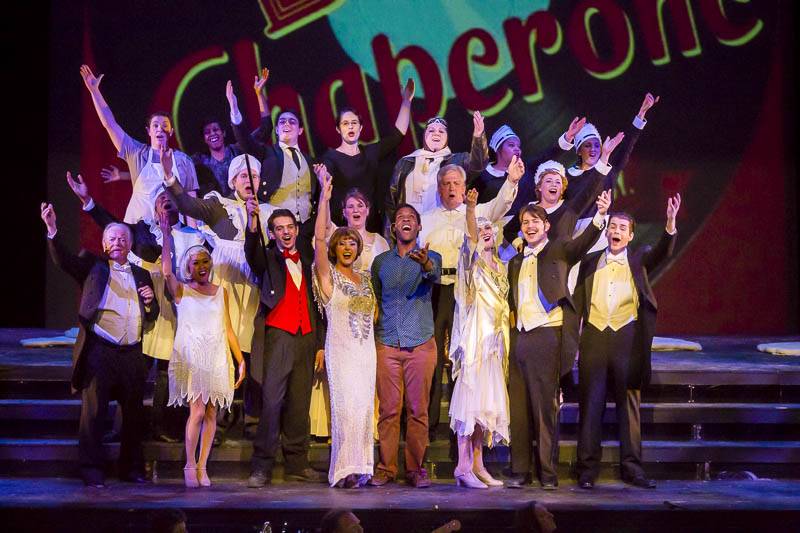I’m not a musical theatre guy. Never have been. In fact, I frequently get flustered and irritated just talking about musicals, and I get equally annoyed with people who try to tell me how great they are. So let’s talk about something else, okay? Anything else.
Let’s say you wanted to make a trifle.
There are all manner of ways to go about it—all sorts of different recipes to suit different tastes. Some are chocolatey, some filled with fruit or some other regional delicacy. To make matters simple, let’s go with a traditional crowd-pleaser. An old favorite, if you will.
(You can see where I’m headed with this, but stay with me.)
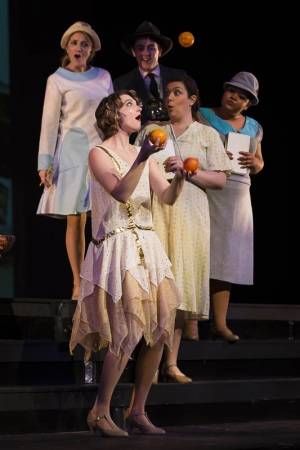 At the very least, you’re going to need three things: a spongy cake base; a light, fluffy cream; and something sweet to go in-between. Take these three things, layer them one on top of the other, and repeat until you have something pleasing to the eye. Then all that remains is to serve this confection to your hungry, appreciative guests.
At the very least, you’re going to need three things: a spongy cake base; a light, fluffy cream; and something sweet to go in-between. Take these three things, layer them one on top of the other, and repeat until you have something pleasing to the eye. Then all that remains is to serve this confection to your hungry, appreciative guests.
My point? I’m not a musical theatre guy.
Certainly I appreciate the amount of talent it takes to belt out a song or six, and I have nothing but admiration for the skill and hours of practice it takes to get the timing just right on all those dance numbers. But, regardless of the unbelievable work that goes into making them (and in direct opposition to their enormous popularity and box office earnings), I’ve always thought of musicals as somehow… insubstantial. Lightweight. Less worthy than, say, a good play about an unhappy family or a prince killing a king (not that those are mutually exclusive plot synopses). In other words, the other kind of trifle.
It’s just singing and dancing, I’ve told myself. The story is so thin! It’s just there to stitch together the songs and dance routines! What is the point?, I have asked myself. I have, in short and on multiple occasions, turned my nose up at musical theatre.
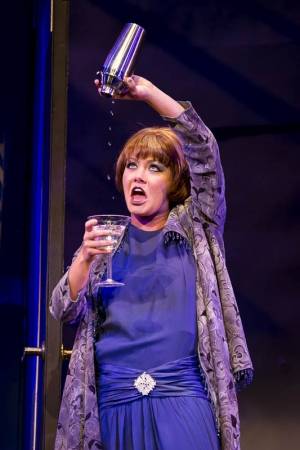 And here’s the thing: I wasn’t wrong. Musicals are, for the most part, just singing and dancing. And oftentimes the story is, in fact, so very thin and truly only there to stitch together more songs and more dancing. And yes, before the comments start coming in, yes, of course, of course there are musicals about serious topics. Musicals like RENT or Next To Normal or countless others. Of course I realize this. But even the heaviest of musicals doesn’t get to call itself that without a few layers of singing and dancing.
And here’s the thing: I wasn’t wrong. Musicals are, for the most part, just singing and dancing. And oftentimes the story is, in fact, so very thin and truly only there to stitch together more songs and more dancing. And yes, before the comments start coming in, yes, of course, of course there are musicals about serious topics. Musicals like RENT or Next To Normal or countless others. Of course I realize this. But even the heaviest of musicals doesn’t get to call itself that without a few layers of singing and dancing.
But here’s the other thing: the people who love musicals already know that—and they love them anyway. Hell, most people who love musicals love them for that very reason.
I believe this will be precisely the case with The Drowsy Chaperone—a musical written by Bob Martin and Don McKellar (of Slings & Arrows fame) with songs by Lisa Lambert and Greg Morrison—which is currently playing in the Harold and Jean Miner Theatre at Parkland College. This sweet, lighter-than-air bit of froofery is directed by J.W. Morrissette, with the able assistance of musical director (and pit band conductor) David Zych. With a great love of musicals and comedy to inspire them, as well as some sharp choreography by Jean Korder, Morrissette and Zych have crafted an evening of theatre that flows so smoothly across the stage that it must have been an absolute beast to rehearse.
In case it wasn’t clear, that was a compliment. For those who attend theatre but have never participated in the making of it, let me put something out there: the less you notice the effort, the harder it was to make it that way. If the timing is right on the money, if the dancer nails that last step perfectly, if the colors and notes and voices and feathers and whatever else happens happens in exactly the right way at exactly the right moment and makes you smile or laugh or gasp from somewhere down in your belly, that’s not just talent—that’s a quantum butt-load of rehearsal.
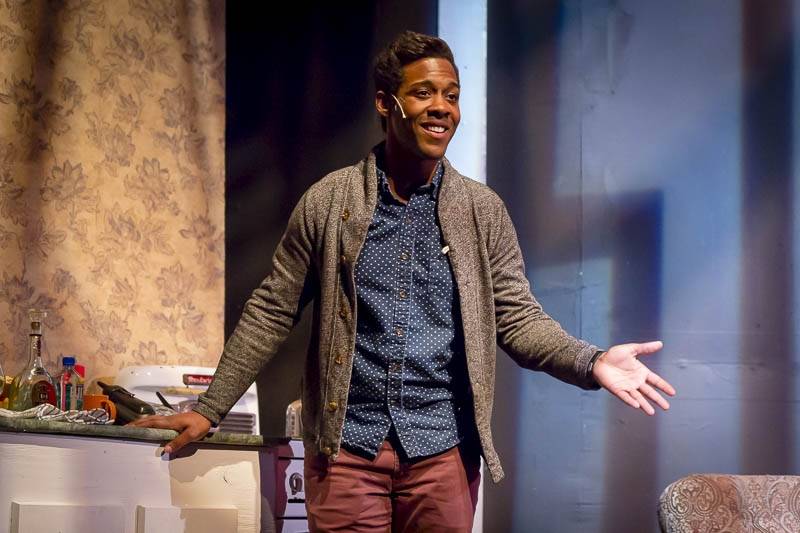
To make matters even more difficult (and satisfying), The Drowsy Chaperone is actually two plays in one. The first is a classic frame-story device (like “Rime of the Ancient Mariner,” but with jokes) in which the narrator—called Man in Chair—greets the audience, tells us of his love of musicals, and proceeds to play for us an album recording of his favorite. Once he drops the needle, it brings us to the second narrative, that of The Drowsy Chaperone itself, which is performed for us with commentary and occasional interaction by Man in Chair. So not only are we watching a fun, frothy song-and-dance show (not that there’s anything wrong with that), but we also get to witness the great joy that this musical brings to our narrator.
It’s a musical about musicals, in other words. More accurate still, it’s a musical about people who enjoy musicals enjoying musicals.
Layers, one on top of the other.
In the show-within-a-show, the characters have gathered for a wedding. Robert Martin (played by the very busy Warren Garver) is to wed the famous actress Janet Van De Graaf (Michelle Ogden, pictured below with Garver) in a ceremony coordinated by his best man George (Evan Seggebruch). Robert is dashing and confident, of course, and Garver brings charm to the role of stiff, smiling straight man. What Robert lacks in personality (intentionally so, per the conventions of the time and the format) he makes up for in comic timing and, yes, even ace roller skating. And, as the glamorous Janet, Ms. Ogden knocks every number out of the park. With her stage presence and dazzling voice, she is very easy to believe as an old-time big-time star.
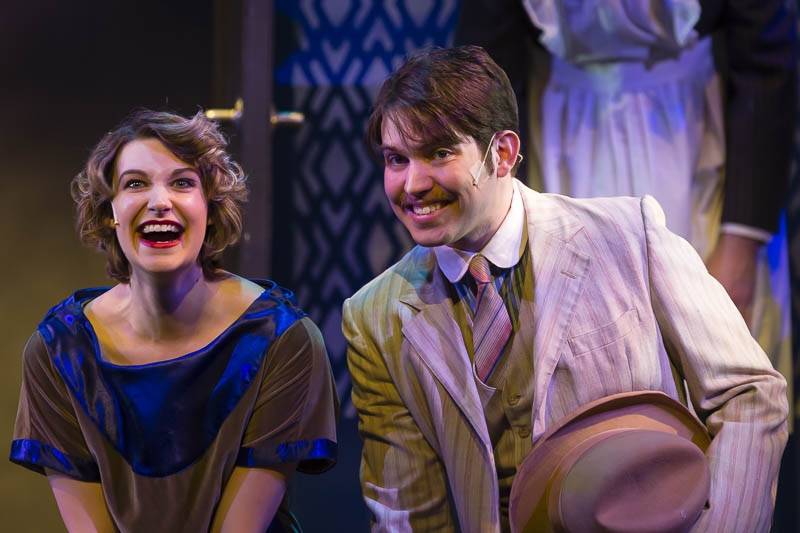
In summarizing the story I must be careful. This is not necessarily for fear of spoiling the plot but rather because the plot simply will not hold up under too much analysis. The people getting married have a reason to be there, of course, and George (an endearingly frazzled Seggebruch, who was great in Parkland’s Around the World in Eighty Days), since he’s the best man and…event planner? (Sure, okay.) And Jane also has a tippling chaperone (a brassy Alexis DawTyne) keeping tabs on her, which I guess is a thing. And the wedding is being held at the home of an extraordinarily ditzy rich lady (Chelsea Zych), so I suppose she and her underling (Lincoln Machula) should be there, too. And then there’s the producer of Janet’s stage show (Nick Schneider), who has come to convince Janet not to leave show business, and he’s being followed by both a wannabe showgirl (Marah Sotelo, below) and two gangsters (Ray Essick and Matthew Henry) whose employer has invested a bundle of money in the show. Add to this roster a lothario named Aldolpho (a scene-stealing Jace Jamison) who has, as far as I can tell, no reason whatsoever for being included, and you have enough eccentric characters, possible mistaken identities, and broad comedic gags to fill a season of Three’s Company. Plus the singing and the dancing.
Cake, cream, something sweet….
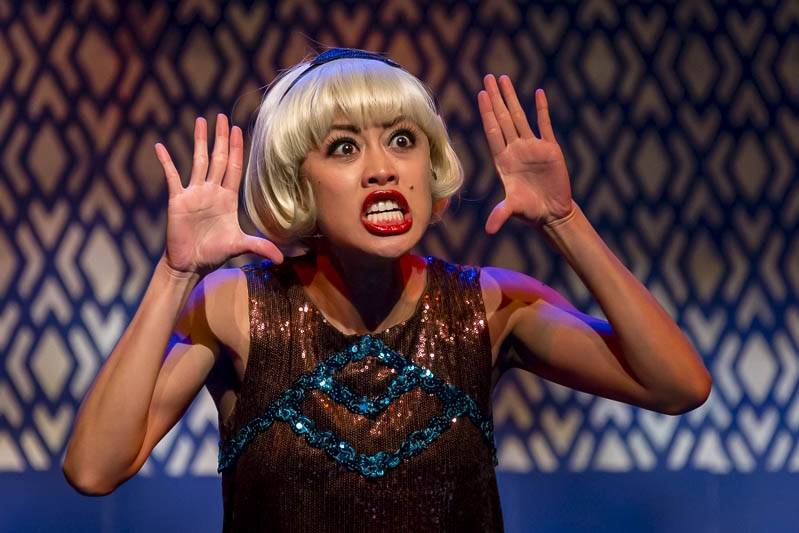
Of course there are complications, but they are easily overcome. Of course the lovers come apart only to come back together, and of course everything works out in the end. It’s predictable and silly, and it’s an enormous amount of fun. The singing and dancing are first-rate, the orchestra sounds fantastic, and the costumes (by Malia Andrus) are gorgeous. And that’s why our narrator (and many of the folks in the audience) love shows like this.
The cast is simply outstanding. It’s not so much that any one of them steals the show; rather, they seem to take turns stealing the show and passing it around. They share the spotlight admirably, and everyone gets a chance to shine brightly. Even so, special attention must be paid to the work of Jace Jamison (below, with Alexis DawTyne), whose “world-famous” lover of women is a blast to behold. When I interviewed Warren Garver recently and asked him who to watch out for, he pointed out Jamison, telling me that this role suited him and his comedic gifts well. Can’t argue with that. I have seen Jamison three times this season, and this is the finest work he has turned in.
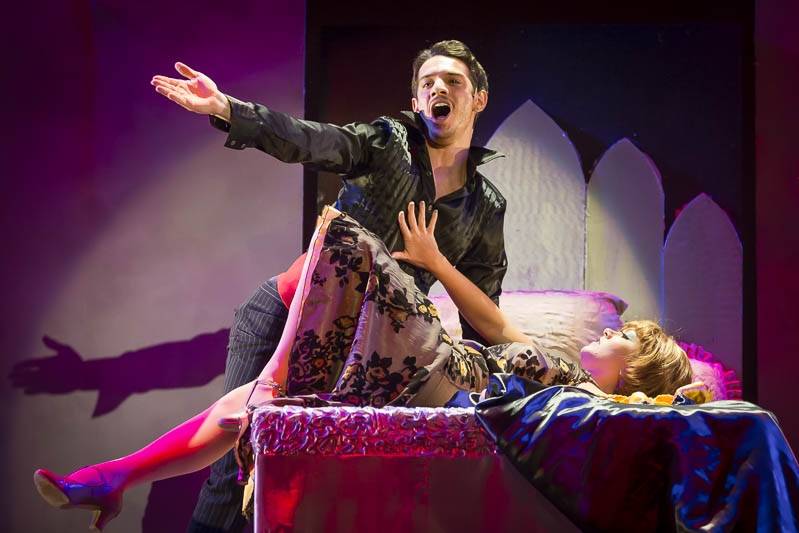
All of this hard work would be for naught, however, without an audience to enjoy it. And by “audience,” I’m not just referring to you and me. As Man in Chair, William Anthony Sebastian Rose works a kind of magic. In his fourth-wall-breaking interactions with the audience and his through-the-lookingglass interactions with the musical’s cast, Rose is witty, self-assured, and utterly engaging. If one had the chance to see the show more than once, I would recommend forcing your eyes away from the main stage to observe Rose. As Man in Chair, he knows every word to every song, and he reacts and follows along with convincing devotion, perfectly capturing the love and mild obsession of the true fan. I’m sure the tone of the play is somewhat affected, from venue to venue, by whoever sits in that chair, and I cannot think of anyone better to guide us than Rose. Through him, we get a glimpse of Man in Chair’s inner life; more importantly, though, we get a glimpse of our own.
And here’s where I conclude the dessert metaphor. With The Drowsy Chaperone, the structure may be the spongiest of cakes (intentionally, but still), and the performances are the definitely the cream. What is that third ingredient, then—the mysterious something sweet that makes each bite that much more enjoyable? It’s the love of the theatre—that giddy, romantic sense of release and transportation that Man in Chair clearly has and that we come away with, too.
It is a pleasure to experience a show that is so thoroughly good, and it is especially pleasurable for a reviewer to get to recommend a good show to others. In this instance, I have the distinct opportunity to recommend two shows in one, and I do so with enthusiasm.
I may not be a musical theatre guy, even now, but that doesn’t mean I don’t have a favorite musical. I do now, and I’m pretty sure this is it.
The Drowsy Chaperone will continue its run at Parkland through May 2nd. Visit the Parkland College Theatre website for ticket information and to make a reservation. Go, enjoy. There’s plenty of trifle to go around.
Photos by Scott Wells.








